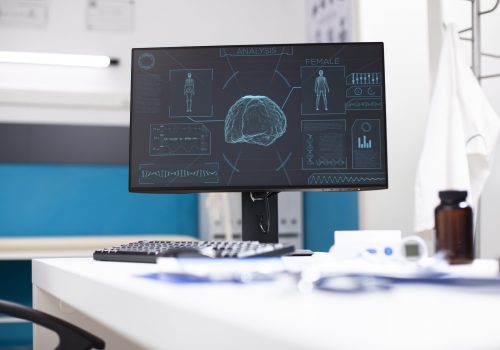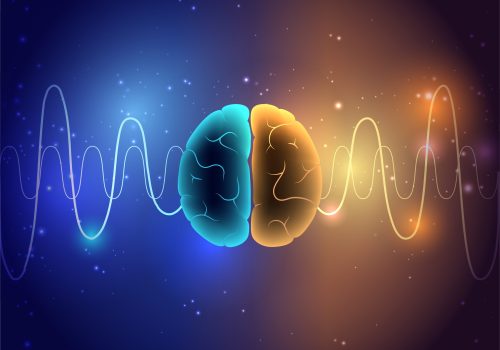Neurofeedback Therapy In Chicago
Your brain has the ability to heal and change. At J. Shoshana & Associates, we use neurofeedback therapy—also called EEG biofeedback or neurofeedback training—as a safe, drug-free way to help your brain function at its best.
Think of it like a workout for your brain. Through guided practice, your brain learns healthier rhythms that can improve mood, focus, sleep, and resilience. Neurofeedback is used with patients of all ages and is especially effective for ADHD, depression, and anxiety.

What Is Neurofeedback?
Neurofeedback is a form of neurological feedback that shows your brain how it’s functioning in real time. Every thought, feeling, or behavior is powered by brainwaves. When these patterns become unbalanced, you may feel distracted, anxious, or mentally drained.
By giving your brain a “mirror,” neurofeedback helps you learn which brainwave patterns are healthier. Over time, your brain naturally shifts toward balance and stability.
You can learn more about our full range of psychological evaluations to see how testing and neurofeedback can work together.

Why Neurofeedback?
- Drug-free and non-invasive
- Personalized to your unique brain activity
- Trains the brain to self-correct
- Suitable for children, teens, and adults
- Backed by decades of neuroscience research
Unlike medication, which masks symptoms, neurofeedback addresses the source by helping your brain function at its best.
The Neurofeedback Process
Noninvasive & easy: We place small sensors on the scalp to monitor brainwaves. No current goes into the brain.
30-minute training: You watch a movie or listen to music/audiobooks for ~30 minutes in a relaxed setting.
Real-time feedback: When the system detects out-of-range patterns, the audio/video briefly dims. Your brain naturally re-centers—and the media returns. This can happen hundreds of times per session.
Learning that sticks: Across multiple sessions, the brain practices healthier timing patterns more often, which is why people typically report steadier focus, mood, and sleep.
Typical cadence: 1–2 sessions/week; we check in regularly and adjust the plan as you progress.
What Clients Commonly Experience with Neurofeedback
- Attention & learning: Improved focus, organization, and task follow-through
- Anxiety & stress: Calmer baseline, fewer spikes into fight/flight
- Mood: More stable mood and energy; fewer ruminative loops
- Sleep: Easier onset, fewer night wakings, better sleep quality
- Memory & cognition: Sharper recall and mental flexibility
Autism-related regulation: Support for arousal regulation and sensory processing (as part of a broader care plan) - Cravings & habits: Support for reducing reactivity and urges alongside therapy/medical care
Neurofeedback trains regulation rather than “treating” a diagnosis directly. Many people experience durable gains; any medication changes should be made with your prescriber.
Prefer proof? Watch a few testimonials to hear how neurofeedback helped others.
Why It Works
Targets timing, not just symptoms: Training helps the brain spend more time in healthier ranges of activity.
Operant learning: The tiny “dim/return” cues give your brain hundreds of practice reps per session.
Personalized over time: We adjust protocols based on your goals and response so improvements build.
Is Neurofeedback Right for You?
If you or your child are struggling with attention, mood, or stress—and want a natural, long-term solution—neurofeedback with Dr. Shosana may be the right next step. Every program is tailored to your brain map and personal goals.
Ready to book your first consultation? Let’s go.
Book Your Consultation Today!
Still considering neurofeedback? Start here. We’ve answered the top questions.

FAQs about Neurofeedback
Yes. Neurofeedback is completely safe, non-invasive, and drug-free. Nothing is put into the brain—the sensors only measure activity. Kids often enjoy sessions because they feel like playing a video game or watching a movie.
Some patients notice improvements after just a few sessions—better sleep, calmer mood, more focus—while others see progress gradually over several weeks. Like exercise, results build with practice and consistency.
Coverage varies by plan. Some policies reimburse the QEEG brain map or psychological testing, while others classify neurofeedback as out-of-network. Our office helps you review benefits and explore payment options.
Medication manages symptoms temporarily, but neurofeedback retrains the brain itself. This makes it a long-term, drug-free option that can be used alone or alongside therapy and medication.
If you or your loved one are struggling with focus, mood, or stress, you don’t have to go through it alone. Neurofeedback therapy offers a safe, natural way to help your brain find balance. Contact J. Shoshana & Associates today to schedule your consultation.
